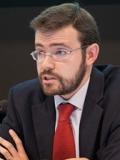
There is positive energy coming from several regions of the world in the form of renewed and pro-active leadership on preferential trade agreements (PTAs) on the part of the European Union (EU), Japan and Africa. This energy is welcome as it is a source of global cooperation, but more is needed to make sure it complements the multilateral trading system.

Environmental investments make up just 1% of the assets of Sovereign Wealth Funds (SWFs). As these public institutional investors have the capacity to deploy enormous capital to green long-term investments, how can they be encouraged to join – and lead – the transition to a low-carbon economy?

A new trade policy approach can help high-polluting countries make their national mitigation policies more effective and thus promote green growth.
Event Updates

Ben Groom and Thomas Sterner discuss the influence of Environmental & Resource Economist (ERE) research on policy in advance of the 6th World Congress of Environmental and Resource Economists (WCERE) taking place from 25-29 June in Gothenburg, Sweden.

Imagine you work for a government agency or philanthropy that wants to support climate mitigation projects (e.g., solar energy installations, building efficiency upgrades). You have a grant budget of $50 million to invest anywhere in the world, and you want to invest in projects that reduce the most greenhouse gas emissions. Where do you put your money, and how do you know that you’re getting the best bang for your buck?

New Zealand is at the forefront of a radical shift in economic thinking. The aim is simple: to elevate natural and social value alongside financial wealth in government planning.
Research

It is time to rethink the global approach to saving the world’s remaining biodiversity and habitats. Edward B. Barbier proposes creating a new Global Agreement on Biodiversity (GAB) modeled after the 2015 Paris Climate Change Accord.

Forget Bitcoin. Blockchain can authenticate a richer, more accurate global ledger of a company’s actual social and environmental performance, providing society with a more realistic assessment of its impact.

Eco-industrial parks are an emerging contributor to an environmentally and socially sustainable, and economically sound industrial development. The World Bank Group, UNIDO and GIZ have developed a common framework for understanding eco-industrial parks.

Around the world, there is a transition towards the ‘circular economy’ that focuses on the 3Rs of reducing material consumption, reusing materials, and recovering materials from waste. In the context of water resources management, cities and their respective water utilities are beginning to promote the reduction of water consumption, reuse of water, and recovery of materials from wastewater.
